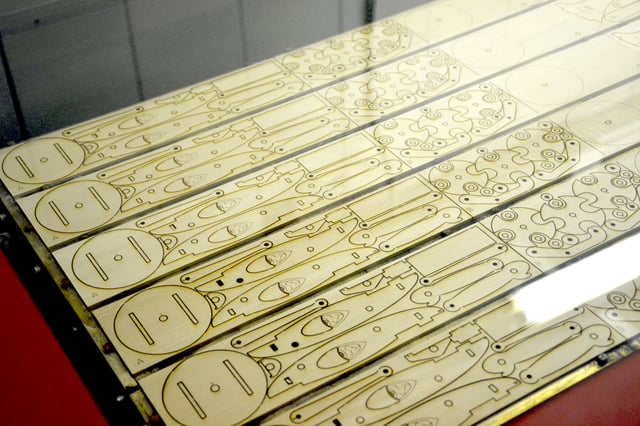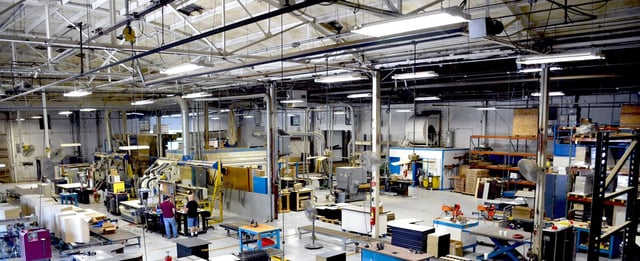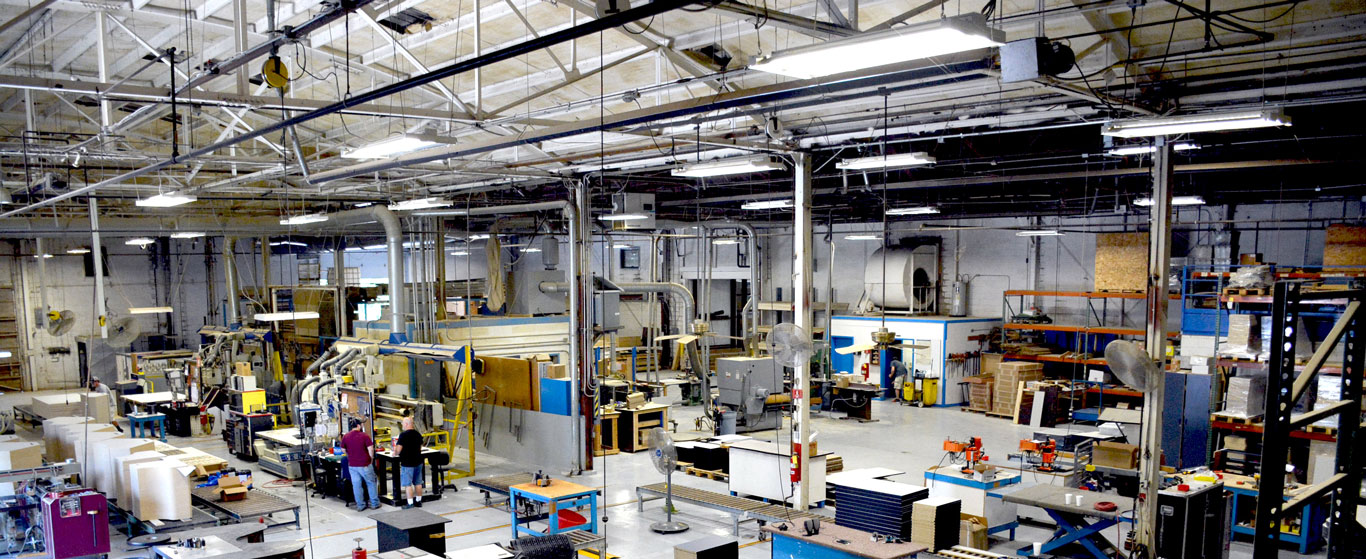Today, manufacturers across the US are holding events to educate the public about the importance of manufacturing and its related careers. The first Friday of October is Manufacturing Day, and here at Pitsco we are incredibly proud of our Manufacturing division – and for good reason!
With a staff of 31 people, Pitsco Manufacturing produces more than 480 unique products. That’s a staggering number of different items to work on, and many of these products run through several departments before being shipped out.
Not only is the number of products produced high, but Manufacturing works closely with the Pitsco distribution center to produce products as needed. For example, instead of having to order more than 1,000 of a specific product from an outside source annually because they won’t accept small orders, Pitsco’s warehouse can instead receive 100 a month from Manufacturing to help manage overhead and inventory. This adds another layer of difficulty to managing the division, but it’s part of why Pitsco can offer the variety of items that it does.
There are many departments that make all this happen: Assembly & Electronics, Finishing, Machine Shop, Plastics & Kits, Panel & Installations, Finishing, Engineering, and more. Most Manufacturing employees are cross-trained to work in more than one department so they can help out when their own department has time available. Learning new things and meeting the creative challenges that come their way must appeal to them, because 60% of them have worked at Pitsco for 15 years or more. In just the Machine Shop, there are three machinists with a combined 70 years of experience and product knowledge!
We took a closer look at three departments and the processes they use, the challenges they face, and what they enjoy about their work.
Laser Technology Boosts Product Possibilities
Pitsco started laser cutting 11 years ago when kits like the T-Bot® II were introduced and we needed to make small, intricate parts that couldn’t be made on a router. We started with one laser cutter in 2006, but the use of this process boomed, so we added a second machine in 2009 and a third in 2012.
And we keep them busy: they run 10 hours a day for 260 days a year.
Not only does Pitsco use these machines to cut basswood, Masonite, acrylic, and other materials to produce kits that are almost entirely laser-cut parts – such as many siege machines and hydraulic kits – but also to create specialized parts for products that are not kits.
“Laser cutting is extremely important to our product mix. If it wasn’t for that, we couldn’t make some products we have today,” said Kyle Bailey, Pitsco director of manufacturing. “It changed how the plant functions.”

The neighboring Machine Shop has also been utilized to build a track system for the newest laser cutter, which has drop-down side doors on either side. A load can run in one side and come out the other without ever lifting the laser’s lid, creating a push system for added efficiency.
Here are the key skills Kyle identified for working with the laser cutters:
- Programming – CAD, SolidWorks, and CorelDRAW are all good to know.
- Quality control – Paying attention to details and understanding efficiencies is key to maximizing this department’s potential.
From Creation to Implementation: Panel & Installations
One unique area of production is Panel & Installations. This team not only makes all the furniture that Pitsco creates to support its curriculum, but they often leave the plant to assemble the furniture on-site at schools and labs across the country.

“The final product is what I enjoy the most,” said Jason Lee, the department’s supervisor. “You can manufacture a thousand parts and have no clue what they are for. Installing a lab and seeing how it all comes together is awesome.”
The department uses CNC routing and milling as well as panel saws, laminating, boring, and edge banding to create its products. There are four full-time and two part-time employees, though they sometimes receive help from other departments. There are several keys to working in this area:
- The ability to read and understand drawings and blueprints
- Safety awareness
- Attention to detail
Jason adds that keeping costs competitive without sacrificing quality is a challenge, as well as staying current with educators' needs. Seeing the results in their environment makes all the effort worthwhile.
Right Aptitude Key to Machine Shop
Humming with CNC lathes and mills, plastic molding and metalizing machines, and other tools, the Pitsco Machine Shop is always an interesting place to visit. Some of the best-known products to come from the area include the Pitsco Gear Font and CO2 dragster wheels and hubs, including the chrome Super C Wheels and Nitro Hubs.
The crew consists of three machinists, including the supervisor, Tim Heincker; one plastics employee; and one bagger. This team makes thousands of parts a week, all of which have to be handled by hand at some point.
Tim said being able to work with your hands is more important than a specific set of hard skills.
“If they are good with their hands, I can teach them to be a machinist,” he said. Tim has a business degree but fell into his job at Pitsco and found that it suited him. “It requires a certain amount of creativity – you have to have an aptitude for it.” He added that being able to learn the G&M coding for the CNC machinery is helpful.
 No matter which department we look at in Pitsco Manufacturing, there are creative and hardworking folks who are proud to be serving education and making products in the USA. We hope you enjoy putting those products to use in the classroom!
No matter which department we look at in Pitsco Manufacturing, there are creative and hardworking folks who are proud to be serving education and making products in the USA. We hope you enjoy putting those products to use in the classroom!
TOPICS: IN THE CLASSROOM, IDEAS & INSPIRATION, Technology, STEM, Engineering



